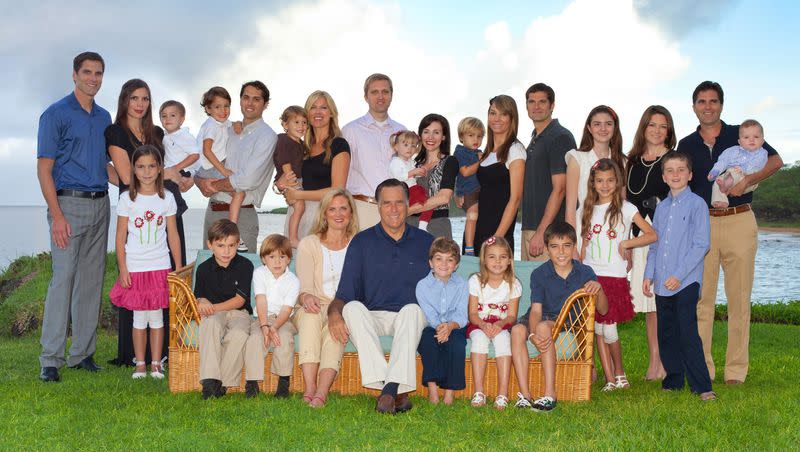Perspective: Are Latter-day Saints still having large families?

Traditional Thanksgiving gatherings have been disrupted by a variety of forces in recent years — from pandemic barriers to politics. Far less attention has gone to another influential variable making a more gradual impact across decades: declines in the average family size in America.
Surprisingly, while maintaining one of the higher fertility rates in the country, Utah is not having enough children to replace itself. This follows trends around the world as developed countries (and some developing countries) are increasingly finding it difficult to have enough babies to take care of their aging populations.
What does that mean for Latter-day Saints’ famously large families?
It turns out those who wonder if the large Latter-day Saint family is a thing of the past might be getting ahead of the data. Although it can be hard to say for sure what’s happening because very few datasets asking about religion have sample sizes necessary to calculate the best, standard measure of family size (“total fertility rate”), we still can get close.
For example, the Cooperative Election Study in 2022 had 706 Latter-day Saints. When looking at how many children each age group of Latter-day Saints had, comparing it to the non-Latter-day Saints, you will find that, even in the year 2022, Latter-day Saints still report much larger family sizes across almost all age groups.
Related
Overall, it looks like even though Utah families are not replacing themselves, Latter-day Saints in the United States are still having relatively large families — almost twice as large as the American average in some age groups.
My colleague Stephen Cranney just finished an interesting analysis of the 2022 Cooperative Election Study showing that, even in an age of declining fertility rates across the board, Latter-day Saints still report measurably larger family sizes across almost all age groups. pic.twitter.com/Fxhk5c6PDU
— Jacob Z. Hess (@JacobZHess) November 22, 2023
This is a case where equating Utahns with Latter-day Saints might be slightly misleading — since, of course, a lot of Utahns are not Latter-day Saints, and a lot of Latter-day Saints are not Utahns.
That Latter-day Saints are having larger families is not surprising, as the faith’s theology has always partly revolved around the family. Alongside the Abrahamic religious imperative to multiply and replenish the earth, The Church of Jesus Christ of Latter-day Saints centers its afterlife theology around, as Apostle Parley P. Pratt said, “those inexpressibly endearing relationships” of family.
So, why then is Utah fertility declining? First, one likely reason is the decline in percentage of Latter-day Saints in Utah, since many people are moving to the Beehive State.
As people move into Utah, affordability is also becoming an issue preventing people from having more children, with rising home prices in Utah making it increasingly difficult to support a large-family lifestyle.
This is borne out by studies on a national level, which ask people why they’re having the number of children they are. Among other things, they provide evidence that women in the U.S. are not having as many children as they say they want to have, in large part because of financial concerns, and in part because they are not finding partners with whom they want to have children.
Countries around the world have tried a wide range of creative policies ranging from the straightforward (cash bonuses for having children) to the creative (Russia’s National Conception Day), with very little, if anything, to show for it.
It is possible that secularized societies just don’t, fundamentally, have what it takes to encourage larger families, but in principle a society that values larger families will esteem and support caretaking work — whether stay-at-home parents or child care professionals — as much as they do more traditional, market-based occupations.
To encourage larger families, societies would also need to engineer policies to make society more affordable for larger families, in particular. Even if such policies can’t reverse deep-seated attitudinal shifts and demographic tendencies, they might have effects on the margins. For something as important as the perpetuation of the human species, every little bit helps.
Whether large or small, politically aligned or divergent, maddening or enlivening, be grateful for those you will be gathering with today. These precious relationships are something we can all be thankful for, no matter how many seats are at our Thanksgiving table.
Stephen Cranney is a nonresident fellow at Baylor University’s Institute for the Studies of Religion and teaches at Catholic University of America.
